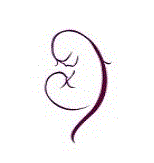When and How to Wean Your Baby from Breastfeeding
What are the signs that your baby is ready to wean? How can you wean gradually? We answer all these questions and more.

How to Gradually Wean a Breastfed Baby

Weaning a baby from breastfeeding is a significant transition that can be challenging for both mother and child. This article provides in-depth insights and guidance on facilitating a smoother weaning process.
WHO Breastfeeding Recommendations
The World Health Organization (WHO) recommends exclusive breastfeeding for the first six months of a baby's life. This means that infants should receive only breast milk, without any other food or drink, not even water, except for prescribed medicines.
After six months, the WHO advises continuing breastfeeding while introducing appropriate complementary foods. They recommend continuing breastfeeding up to two years of age or beyond, alongside the gradual introduction of nutritionally adequate and safe complementary foods.
The WHO recognizes the numerous health benefits of breastfeeding for both infants and mothers. Breast milk provides essential nutrients, antibodies, and other bioactive components that support optimal growth and development, protect against infections, and reduce the risk of chronic diseases.

When Is The Right Time To Wean?
It is essential to recognize that the decision of whether or not to breastfeed is a deeply personal one and should be respected without judgment. Every mother has her unique circumstances, challenges, and considerations that influence her choice.
While breastfeeding is recommended by healthcare organizations for its many benefits, it is important to understand that not all women are able or choose to breastfeed, and that is perfectly okay. Factors such as health conditions, medication use, personal comfort, mental health, or personal preferences may influence the decision. It is crucial to create a supportive environment where mothers feel empowered to make the choice that is best for them and their families, free from judgment or guilt. Ultimately, what matters most is that the baby receives love, care, and proper nutrition, regardless of the feeding method chosen.
On the other hand, it is equally important to recognize that breastfeeding an older child is a personal choice that should not be met with guilt or judgment either. The decision to continue breastfeeding beyond the recommended duration is an individual one, based on the needs and dynamics of the mother-child relationship.
Breastfeeding can provide comfort, emotional connection, and nutritional benefits for both the older child and the mother. Every child is unique, and they will naturally show signs of readiness for weaning when they are developmentally ready. By allowing the weaning process to unfold naturally, mothers can maintain a nurturing and responsive approach that supports the emotional and physical well-being of both themselves and their children.
Ultimately, the decision to breastfeed and when to wean should be guided by the individual needs and comfort levels of the mother and child, without judgment or external expectations.

The Tushbaby Hip Carrier
With its ergonomic design and comfortable waistband, Tushbaby provides optimal support for you and your baby. Say goodbye to shoulder and back pain from traditional carriers, as Tushbaby evenly distributes your baby's weight, relieving strain and promoting better posture.
Weaning Myths Debunked
- Do you need to stop breastfeeding when your baby starts teething? Continuing to breastfeed when your baby starts teething is beneficial as it offers essential nutrients and antibodies, and the nursing provides comfort. There’s no medical reason to stop breastfeeding during teething, and while there’s a concern about biting, it’s usually manageable.
- Will weaning during mastitis worsen the condition? You should not stop breastfeeding during a mastitis infection because continuing to breastfeed can actually help clear the infection. Mastitis occurs when there is a blockage of milk ducts, leading to inflammation and sometimes infection. By continuing to breastfeed, you ensure that milk is flowing, which helps to clear the blockage. Moreover, the breast milk you produce carries antibodies that safeguard your baby, and breastfeeding with mastitis does not pose any harm to your child. Abruptly stopping breastfeeding during mastitis can also lead to engorgement, which can worsen the condition and increase the risk of abscesses.
- Do you need to stop breastfeeding when you return to work? It is possible to continue breastfeeding while working. Moms can pump breast milk during work hours and bottle-feed the baby with the expressed milk. Many workplaces have provisions for nursing mothers, including dedicated spaces for pumping.
- Do you have to stop breastfeeding when you are ill? You should not wean when you are sick or have the flu because breastfeeding provides important antibodies and immune factors to your baby, which can help protect them from getting sick or lessen the severity of the illness. When you are unwell, your body produces specific antibodies in response to the illness, and these are passed on to your baby through breast milk. This can provide them with added protection against the illness you are experiencing. Additionally, breastfeeding can help maintain hydration and provide comfort to your baby during this time.
- Do you have to stop breastfeeding when you fall pregnant? Breastfeeding during pregnancy is generally considered safe for both the mother and the baby. The hormones produced during pregnancy do not typically have a negative effect on breastfeeding. However, it's important to note that breastfeeding may become more challenging as pregnancy progresses due to changes in milk supply and nipple sensitivity.

Signs That The Baby Is Ready for Self Weaning
- The baby drinks from a bottle or sippy cup effortlessly.
- The baby starts to drop some feedings.
- The baby is between 2 and 4 years old.
What to Avoid During Breastfeed Weaning
- Avoid stopping breastfeeding abruptly, it should be a gradual process over a few weeks or even months.
- Don’t apply unpleasant-tasting substances to the breast, as this can have adverse emotional effects on the baby.
- Binding the breasts to stop milk production is not advised as it can cause blocked milk ducts and result in mastitis.
Strategies For Gradual Breastfeed Weaning
- Gradually reduce the number of breastfeeding sessions to ease the transition. Start by gradually reducing one feeding session every week.
- From six months onwards, you can introduce substitutes like finger foods or milk in a bottle. For babies under one year, supplementing with formula or mixing formula with breast milk can smooth the transition.
- During weaning, provide extra attention and reassurance to your baby.
- Having someone else bottle-feed the baby while the mother is not in the room can be helpful.
- Preserve nighttime feedings until the end, as they comfort and help the baby sleep. More about night weaning.
- If the baby can drink from a sippy cup, offer this instead of a bottle to avoid later difficulties in weaning off the bottle.
- For nursing toddlers, sippy cups with breast milk can ease the transition. Continue pumping for a while.
- Create a calming environment during feeding times, such as playing soft music or dimming lights.

Maintaining Mother’s Well-being
- Gradual weaning signals the body to decrease milk production.
- If breasts become engorged, gently pump for relief. Ice packs can also alleviate swelling and pain.
- Cabbage leaves for weaning - Applying chilled cabbage leaves to the breasts can provide a cooling and soothing effect. The cool temperature can help reduce swelling and inflammation. Cabbage leaves have natural absorbent properties, which can help draw out excess fluid from engorged breasts - reducing swelling. They also contain compounds that have anti-inflammatory properties.
- Certain herbs for breastfeeding can aid in weaning. Sage, Peppermint, Parsley, Chickweed, and lemon balm are used as weaning herbs.
- Seek emotional support through communication with partners, and friends, or joining support groups. Mothers may experience emotional upheaval, including depression, during weaning.
Weaning and Sleep Patterns
Weaning may affect your baby’s sleep patterns. Be prepared to manage potential sleep disruptions and maintain a consistent bedtime routine.
Flexibility in Approach
Each child is unique. Be patient and flexible in your approach, adapting strategies as needed for your child’s comfort and well-being.
How to Stop Nursing Your Baby to Sleep
Learn more about Dr. Sarah Mitchell and her practice.
